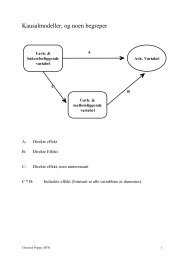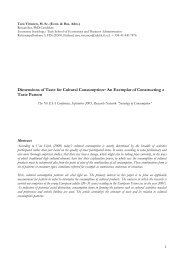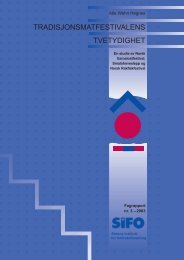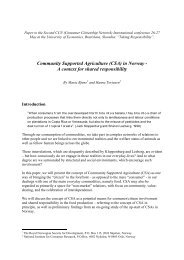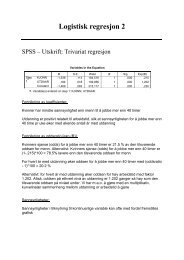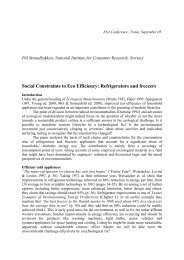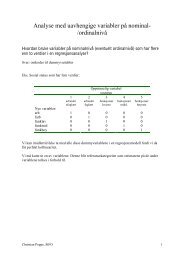Rapport nr - SIFO
Rapport nr - SIFO
Rapport nr - SIFO
- No tags were found...
Create successful ePaper yourself
Turn your PDF publications into a flip-book with our unique Google optimized e-Paper software.
SummarySince the food crisis of 1996, French consumers have begun to be more concerned and interestedin the food processing processes and in the origin of the raw materials of food products.After these crises, consumers have been increasingly interested in product labelling since itguarantees product quality and traceability. The availability and resemblance of all productsin the same category to each other influenced consumers to find other criteria when purchasinga product.We use here the notion of “local food product” in its broad sense, which is typically a foodproduct linked to an identified location either by geography or by tradition (i.e. products usingSIQO like regional food, food with PDO - Protected Designation of Origin- or PGI - ProtectedGeographical Indication- 1 , small scale food etc). Currently, France produces manydifferent types of local food which are linked to the place of its production, obviously due topolitical decisions and territory diversity. However, the French signs of quality have been inlegislation for almost one century. Many regulations and legislations have been createdthrough product labelling which link the product and its manufacturing place of origin in orderto promote, protect, and defend these particularities.The French system of food certification inspired the European Union, which created andeuropean regulation about PDO (Product Denomination of Origin), PGI (Protected GeographicalIdentity) and TSG (Traditional Speciality Guaranteed) in 1992. Many other Frenchlabels underline the superior quality of food products, as for example the “Label Rouge”, theenvironmental protection label, about organic foods “AB”, the Certification of Product Conformity,termed “CCP” or the “Food from Mountain” label which specifies the particular originof mountain products as well as regional labels. The PGI (Protected Geographic Identity)and PDO involve around 120 000 producers in France, which represent more than 20 % ofthe total number of producers and more than 80% of the value created in the wine fields. Todayall the regulations concerning PDO, PGI and TSG (Traditional Specialities Guaranteed)are established by the European Union for all Member countries of Europe. Moreover, themanagement of these official signs of quality also pertains to their insertion in the WorldTrade Organisation (WTO). One goal for the European food sector is to extend the validity ofthese signs of quality world-wide. The demonstration of this goal concerning local food inagriculture since the beginning of the Cancun Negotiations has been to include these qualitysigns in its agriculture policy. The choice to use subsidies to transform agriculture from quantitativeproduction to qualitative production and to reduce direct subsidies linked to quantitativeproduction seems to be in agreement with the expectations of WTO. Promotion of localfood by the development of quality signs can be a means to try to convert European agricul-1 We refer here to the definition used in the French Norwegian project “Consumers conceptions ofLocal Food” financed by the French Norwegian Foundation and to the three official European signs:Protected Designation of Origin (PDO), Protected Geographical Indication (PGI) and Traditional SpecialityGuaranteed (TSG).




